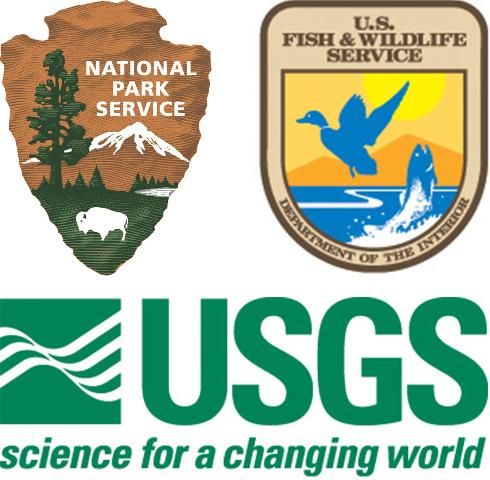What does a changing climate mean for the future of south Florida's wildlife?

Even a fleeting mention of the Everglades conjures colorful images of alligators, panthers, flamingos, and manatees. Over the centuries, this familiar cast of characters has become synonymous with life in south Florida. But the workings of a changing climate have the potential to significantly alter the assemblage of animals that call this area home. Global projections suggest south Florida wildlife will need to contend with higher temperatures, drier conditions, and rising seas in the years ahead (Cameron Devitt et al. 2012). Recent modeling efforts shed new light on the potential outcomes that temperature and precipitation changes may have for threatened and endangered species in the area.
American Crocodile
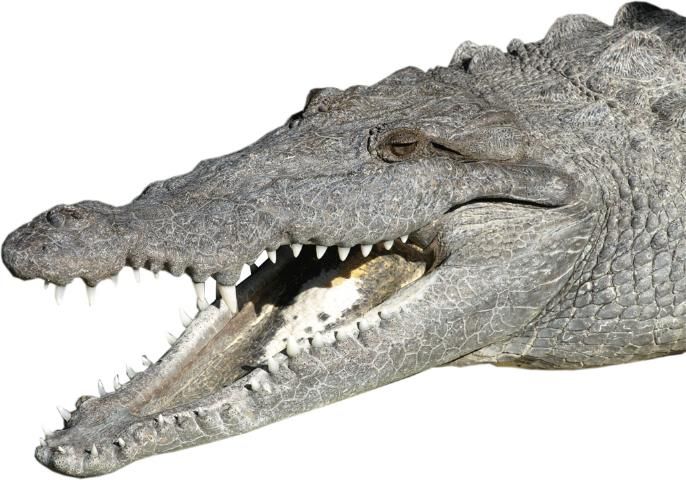
Credit: National Park Service
In terms of wildlife, a changing climate will likely result in both losers and winners. American crocodiles, for example, may fare surprisingly well in the years ahead. Historically, the coasts of extreme south Florida were the only domain of crocodiles in the United States (Kushlan and Mazzotti 1989). But given their tolerance for both brackish water and higher temperatures, crocodiles may be able to occupy a much larger range under future conditions. Though coastal development and beach erosion could limit their presence in some areas, crocodiles can readily disperse through open water to more suitable locations. Protecting this species from a changing climate may require minimal management intervention.
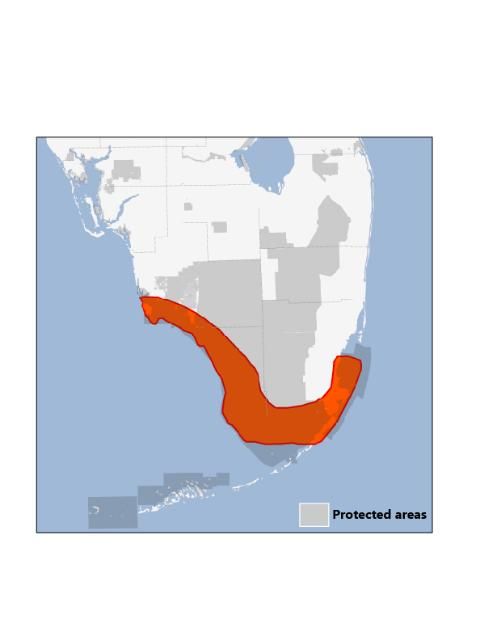
Credit: UF/IFAS
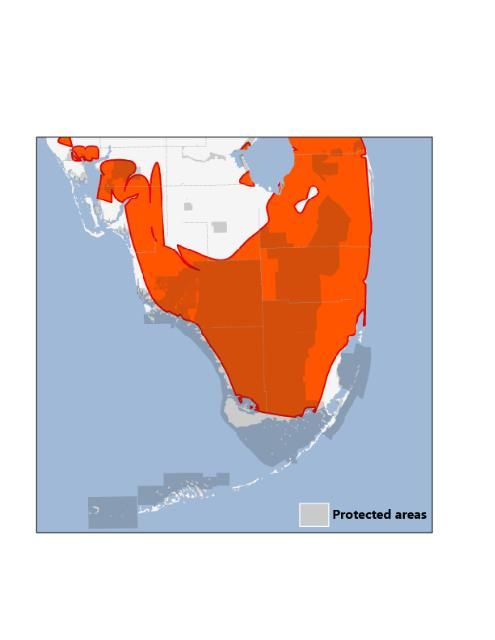
Credit: UF/IFAS
Florida Panther
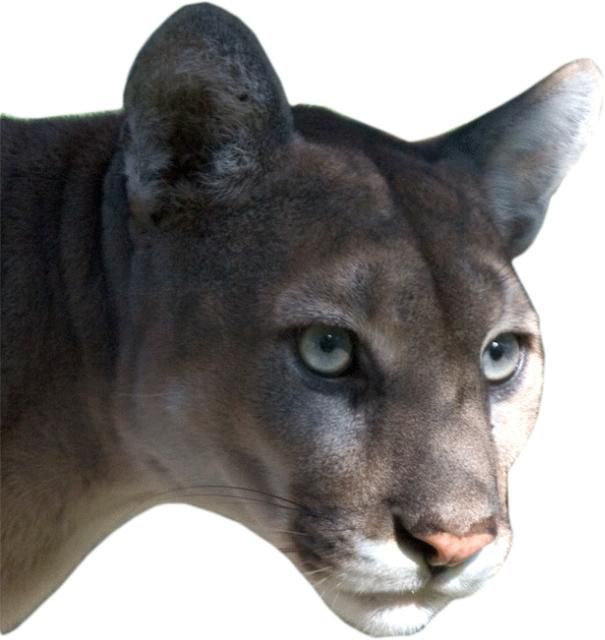
Credit: National Park Service
Though once perched on the brink of extinction, the Florida panther has rebounded in recent years (U.S. Fish and Wildlife Service 2008). Changing conditions could make portions of the panther's current range uninhabitable, but also present new potential territories further north. Because they are highly mobile, panthers may ultimately move outside the current protection of parks, preserves, and other public lands. Thus, large-scale planning will likely be necessary to ensure the availability of open space to meet their dispersal and habitat requirements in the future.
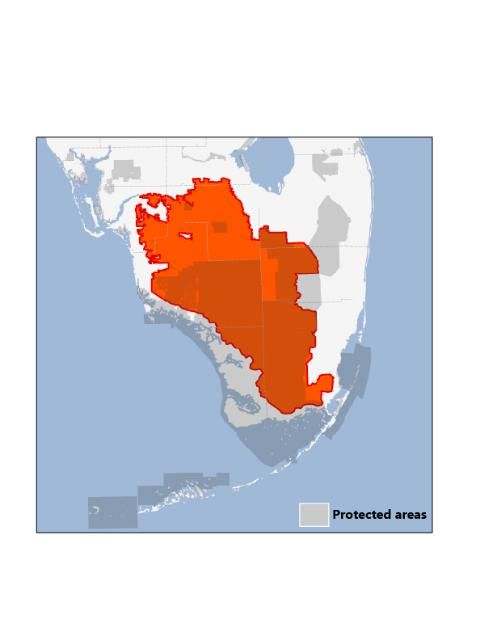
Credit: UF/IFAS
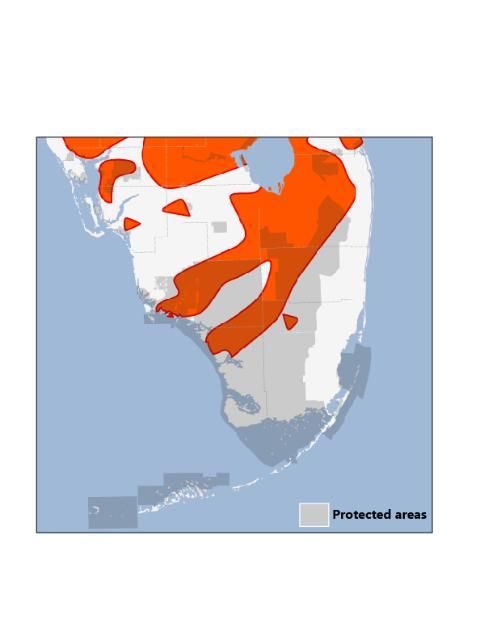
Credit: UF/IFAS
Key Deer
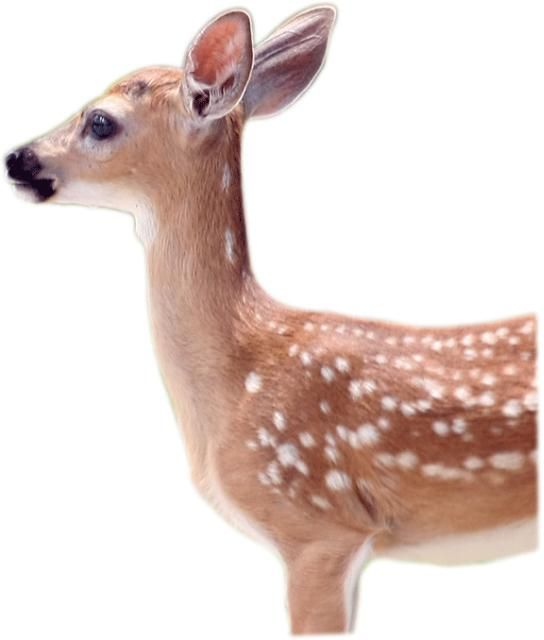
Credit: © Ianaré Sévi / Wikimedia Commons / CC-BY-SA-3.0
Changing conditions could pose serious challenges to some of our wildlife. This is particularly true of species that presently exist over very limited ranges. Key deer—found only on upland islands of the lower Florida Keys—are popular with both residents and visitors alike. Maps of climate suitability suggest they may be unable to tolerate projected changes within their present range. And though small pockets of suitable climatic conditions may appear on the distant mainland, it is unlikely Key deer could successfully inhabit those areas. Some form of management intervention may one day be required to save the Key deer. As such, they are a good illustration of the difficult choices we may have ahead.
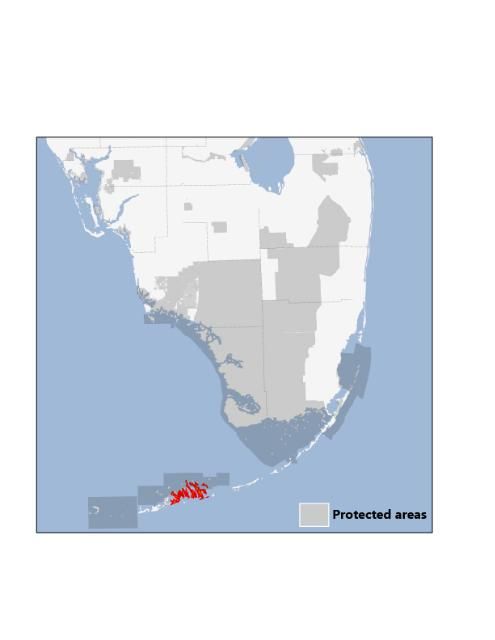
Credit: UF/IFAS
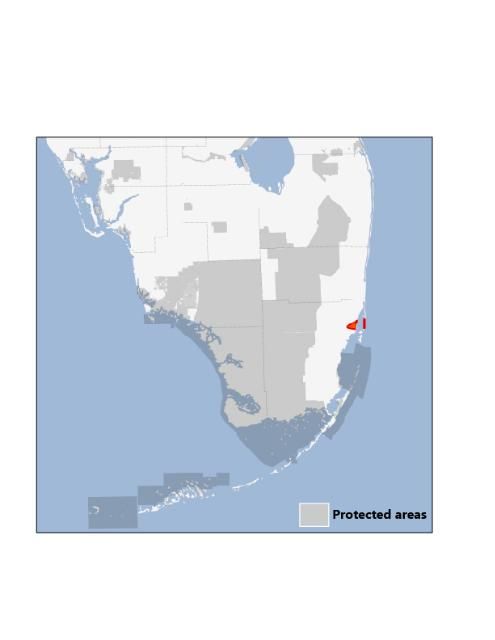
Credit: UF/IFAS
Cape Sable Seaside Sparrow

Credit: National Park Service
For some species, climate change may leave us with few options. The federally endangered Cape Sable seaside sparrow is already limited in number and distribution, being presently found almost entirely within the borders of Everglades National Park (U.S. Fish and Wildlife Service 1999). Maps of climate suitability suggest that a changing climate may worsen the bird's situation, causing conditions suitable for the survival of the sparrow to disappear entirely from Florida. Given such a possibility, scientists, managers, community groups, and citizens would need to weigh whether it would be most prudent to purposely move the sparrow to more suitable conditions elsewhere, establish captive colonies, or simply allow it to go extinct.
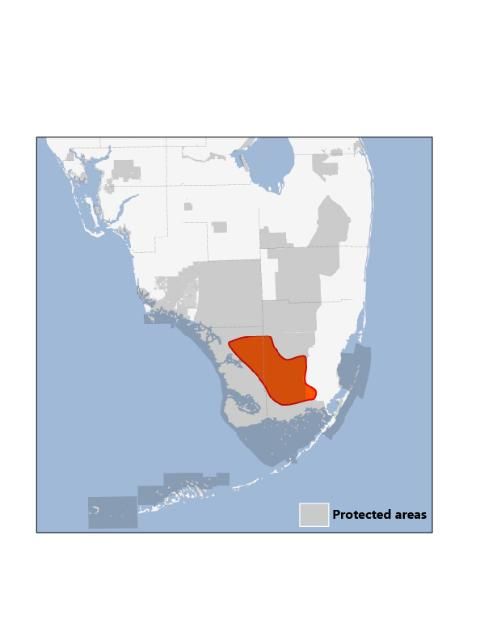
Credit: UF/IFAS
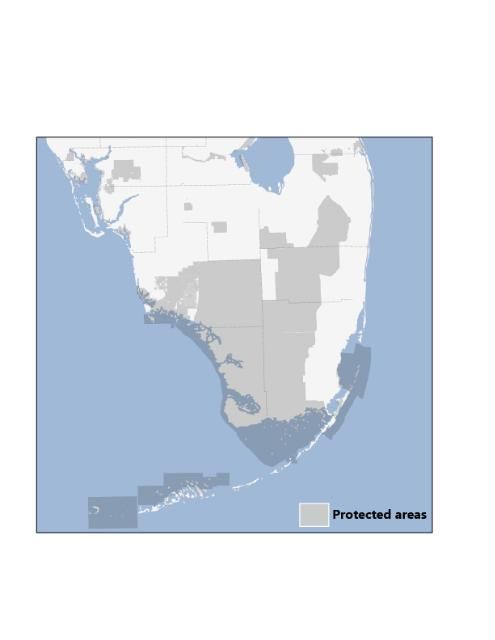
Credit: UF/IFAS
About the Models
Climate suitability maps for Florida's endangered species in the year 2060 were created using ecological models that correlate species occurrences with environmental conditions, allowing researchers to estimate the suitability of different areas for a particular species. Because climate is a major factor in determining geographic range limits, the models used here draw on climate data (temperature and precipitation) to describe environmental suitability for some of south Florida's endangered species (note that sea-level-rise projections were not used to inform these models). Data on future climate were acquired from both regional (Stefanova et al. 2012) and global (Ramirez and Jarvis 2008) datasets informed by global climate models, and the areas where different models agreed that a species would have suitable climate conditions in the future are shown in the maps above.
We must remember, however, that accurate prediction of future conditions is a complicated effort, and the future of Florida's wildlife is by no means certain. The maps shown above give us an idea about areas that may have suitable climate for species in the future. Effective management of threatened and endangered species requires more detailed information on habitat availability, land ownership and population trends. Habitats and wildlife are dynamic and—in some cases—could adapt to rapidly changing conditions. This work is one piece of a larger effort to ensure that Florida's wildlife can coexist with the human population as climate and landscapes change during the twenty-first century.
Learn More
http://crocdoc.ifas.ufl.edu/projects/climateenvelopemodeling/
Literature Cited
Cameron Devitt, S. E., J. R. Seavey, S. Claytor, T. Hoctor, M. Main, O. Mbuya, R. Noss, and C. Rainyn. 2012. "Florida biodiversity under a changing climate." Florida Climate Task Force. (http://floridaclimate.org/docs/biodiversity.pdf)
Kushlan, J. A., and F. J. Mazzotti. 1989. "Historic and Present Distribution of the American Crocodile in Florida." Journal of Herpetology 23(1): 1–7. DOI:10.2307/1564309.
Ramirez, J. and A. Jarvis. 2008. "High Resolution Statistically Downscaled Future Climate Surfaces." International Center for Tropical Agriculture (CIAT); CGIAR Research Program on Climate Change, Agriculture and Food Security (CCAFS). Cali, Colombia.
Stefanova, L., V. Misra, S. Chan, M. Griffin, J.J. O'Brien, and T.J. Smith III. 2012. "A proxy for high-resolution regional reanalysis for the Southeast United States: assessment of precipitation variability in dynamically downscaled reanalyses." Climate dynamics 38:2449–2466. DOI:10.1007/s00382-011-1230-y.
U.S. Fish & Wildlife Service. 1999. "Multi-Species Recovery Plan for South Florida: Cape Sable Seaside Sparrow" U.S. Fish and Wildlife Service. (https://www.fws.gov/verobeach/MSRPPDFs/CapeSableSeasideSparrow.pdf)
U.S. Fish and Wildlife Service. 2008. "Florida Panther Recovery Plan (Puma concolor coryi).
Third Revision." U.S. Fish and Wildlife Service. Atlanta, Georgia. (https://www.fws.gov/uploadedFiles/Panther%20Recovery%20Plan.pdf)
